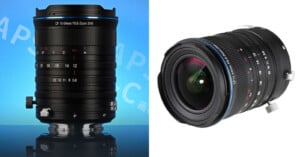
The Laowa CF 12-24mm f/5.6 is the World’s First Zoom Shift Lens
After a series of teasers on Chinese social media, Venus Optics has officially revealed its new Laowa CF 12-24mm f/5.6 Zoom Shift lens designed primarily for APS-C mirrorless cameras.

After a series of teasers on Chinese social media, Venus Optics has officially revealed its new Laowa CF 12-24mm f/5.6 Zoom Shift lens designed primarily for APS-C mirrorless cameras.
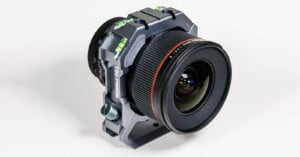
I have stitched many panoramas, including those I took with my Canon 24 mm TS lens by shifting the lens from side to side. The TS lens gives easy-to-stitch frames. One uncontrolled element that remains in that case is the parallax shift because the lens position changes. Although that may go unnoticed in landscape panoramas, it is still there.
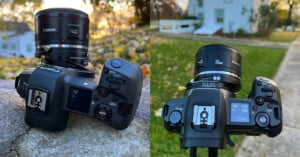
The Fotodiox EF to RF TLT ROKR is a new adapter for Canon RF cameras that adds the ability to tilt and shift any attached Canon EF lens.
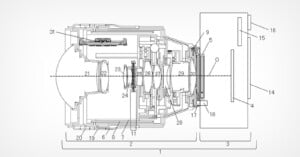
During the DSLR era, Canon built a reputation for its quality tilt-shift lenses. It seems as though just porting over those designs to mirrorless isn't enough, however, as the company has an idea of making what was manual tilt and shift operation instead fully electronic.
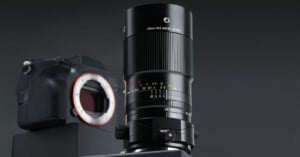
TTArtisan has announced a full-frame 100mm f/2.8 tilt-shift 2x ultra macro lens for Sony E, Fujifilm X, Canon RF, and Nikon Z mounts.
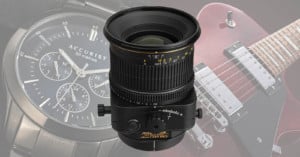
Many people think of tilt shift lenses as something only used by specialist architectural photographers. Some actually don’t realize that they can do more than the tilt shift miniature effect emulated by the Photoshop filter (although it can give some fun results!)

Fujifilm has revealed an updated lens roadmap for both the medium format GFX system and its X Series mirrorless cameras.

Joerg Daiber -- the German filmmaker behind "Little Big World" -- has created a mezmerizing, miniaturized showcase of the Ore Mountains in Germany using a tilt-shift perspective.

Canon is rumored to relaunch its tilt-shift line of lenses in RF mount in 2021, but a new report restates they won't be simply re-mounted versions of their EF counterparts but instead will feature autofocus -- a first for tilt-shift lenses.
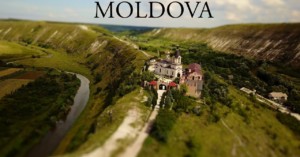
Photographer Joerg Daiber of the YouTube Channel Little Big World has published a 3-minute timelapse, tilt-shift-style aerial video along with a set of photos that captures one of Europe's most beautiful landscapes.
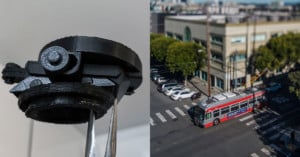
I’ve been making tilt-shift lenses for a while now, and they’re a bunch of fun to make and shoot with. I don’t think I need to sell you on the creative possibilities of this type of photography and videography.
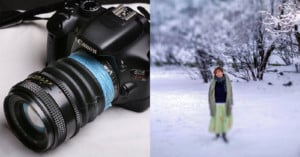
Iranian photographer and camera tinkerer Alireza Rostami wanted to shoot tilt-shift photos but found the specialized lenses too expensive, so instead he decided to make himself a selective focus lens using a cheap CV boot.

Redditor Whomstevest has designed and 3d-printed a fully-functional Canon EF to RF tilt adapter and provided the design so that you can build your own at home. The adapter allows any Canon EF lens to adapt to an RF body and features infinity focus, 7 degrees of tilt, and 180 degrees of rotation.

The Royal Observatory Greenwich’s Insight Investment 2020 Astrophotographer of the Year, Nicolas Lefaudeux, has revealed his technique and the simple DIY adapter that made his award-winning image of the Andromeda galaxy possible.

Filmmaker Joerg Daiber recently published a new creation to his YouTube channel LittleBigWorld, where he shares timelapses of places around the world made "miniature" using a tilt-shift effect. His latest, dubbed Flower Power, takes you to Brussels to watch the creation of the biennial Flower Carpet.

Photographer Eric Floberg made this 10-minute video showing how he creates in-camera double-exposure photos using a tilt-shift lens, a technique he calls his "creative bread and butter."

Joerg Daiber of LittleBigWorld traveled to Pyongyang, North Korea, and created this 5-minute time-lapse that uses a tilt-shift effect to make the hermit kingdom's capital city look like a tiny diorama.

Here's a beautiful 2-minute short film by Raphael Boudreault-Simard of Flow Motion Aerials that shrinks kayakers and the beautiful outdoors into a miniature world using a tilt-shift effect.

My name is James D. Lee, and I'm a photographer based in Oakland. I recently got around to posting four years worth of selected photos shot in and around the San Francisco Bay area strictly on tilt-shift lenses. I completed this project while working full-time marketing/photography positions.
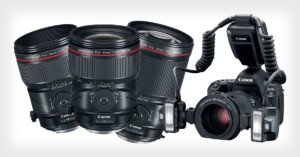
Fresh from Canon, this morning the popular camera manufacturer has unveiled a new macro twin-flash system, as well as its first macro tilt-shift lenses -- and there's three of them.

Photographer Mathieu Stern recently put 3 vintage lenses to the test in a portrait shootout at 4 different locations. The 5-minute video above compares the Soligor 21mm f/3.8, Canon FD S.S.C. 50mm f/1.4, and Helios 103 53mm f/1.8 with a tilt adapter.

Lensbaby's creative selective focus lenses like the Composer Pro will run you around $400; even the relatively affordable Spark costs $90. If all of that sounds too expensive for your taste, you should definitely check out this hacked version Mathieu Stern created for just 30 bucks!

If you love those timelapses that make our great big world look tiny—people scurrying around Manhattan like ants, or airplanes moving around an airport like toys—this simple tutorial will teach you everything you need to know to post-process your own tiny world timelapse.

Everybody knows tilt-shift lenses can be used to get a "miniature" effect, but many photographers are oblivious to their other, more traditional applications, and even fewer understand exactly how these lenses work. The folks at LensPro ToGo are here to clear things up.
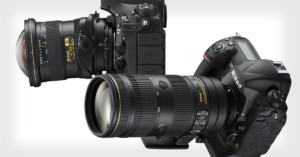
The Nikon faithful have two new lenses to drool over this morning: an all-new ultra-wide PC 19mm f/4E Tilt-Shift that features some fancy engineering, and a redesigned 70-200mm f/2.8E with better stabilization, a new optical design, and an electromagnetic diaphragm.
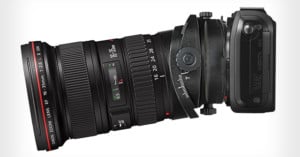
In the future, instead of buying a dedicated Canon lens for tilt and shifting movements, you may be able to simply buy a tilt-shift adapter for your existing EF lenses. A newly surfaced patent suggests that Canon has been working on that kind of universal adapter.
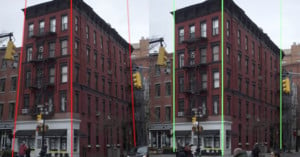
A while back I got my hands on my first tilt-shift lens. Since then I have carried it with me nearly every day, grocery shopping and subway riding – you name it. It’s quite a special and fascinating piece of glass even having aged 43 years.

We've shared in the past how a broken lens can be used for "freelensing," or taking tilt-shift-esque photographs.
Photographer and lens hacker Witono Halim did this by buying a broken 50mm f/1.8 online for $25, sawing a piece off, and combining everything into a ugly-yet-functional lens with $2 of duct tape.
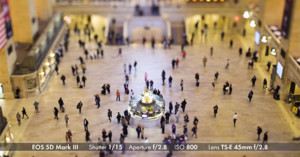
Tilt-shift lenses are nothing short of optical magic... or so it seems. But as their namesake implies, they actually achieve this 'magic' through the use of two clever movements in the lens.
In the short tutorial above, Vincent Laforet, a Canon Explorer of Light and well-known photography educator, explains just how those two components work and how they dramatically impact the look of an image.
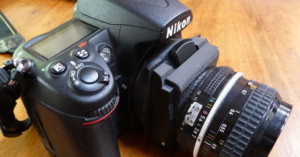
When it comes to DIY tilt-shift, there are a few different options out there, but none of them that we've seen are quite as impressive and practical as this 3D printed method from Instructables user Cpt.Insano.